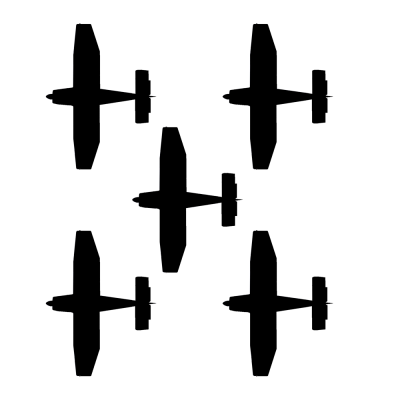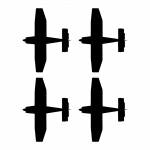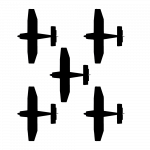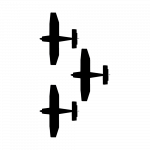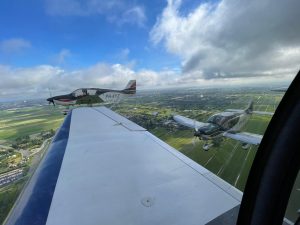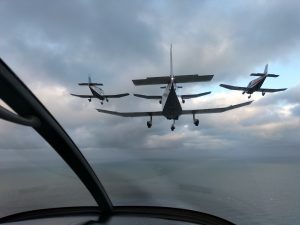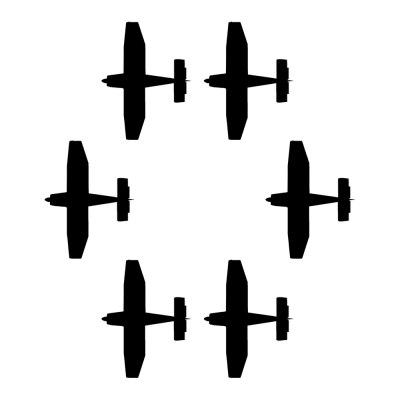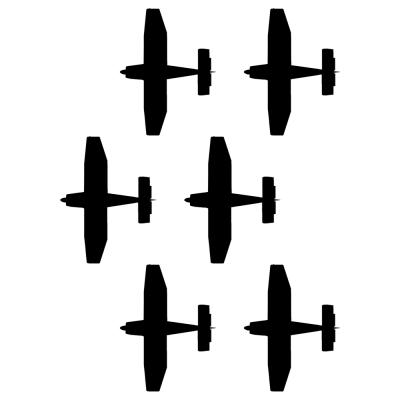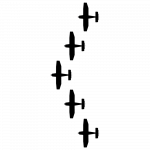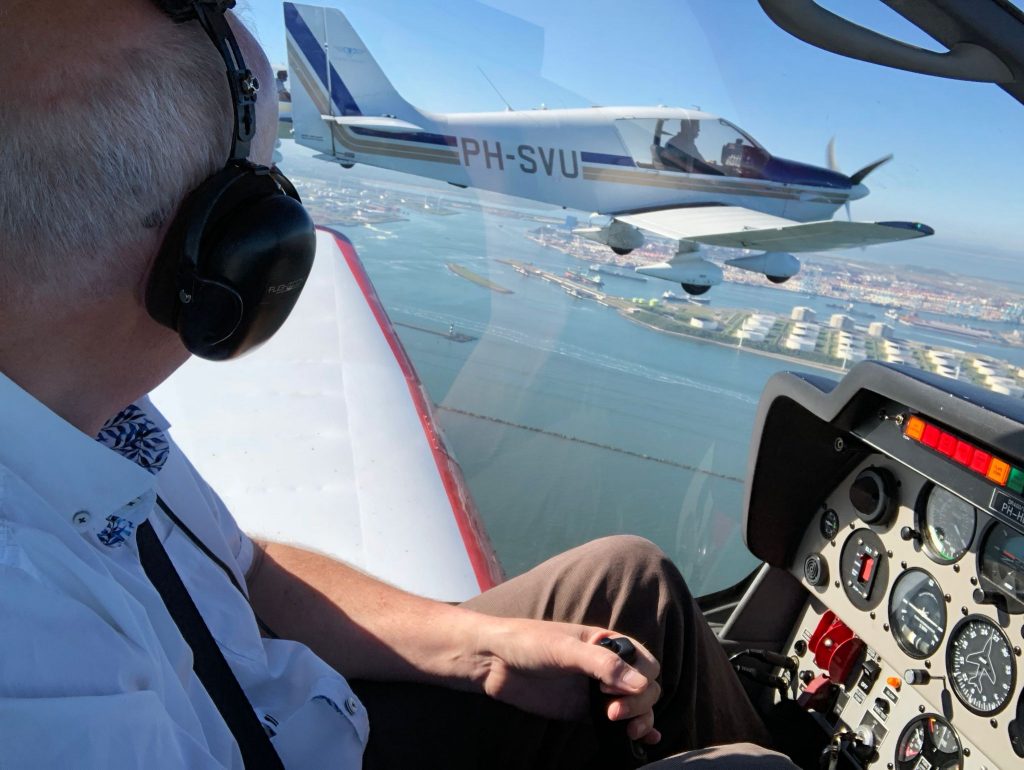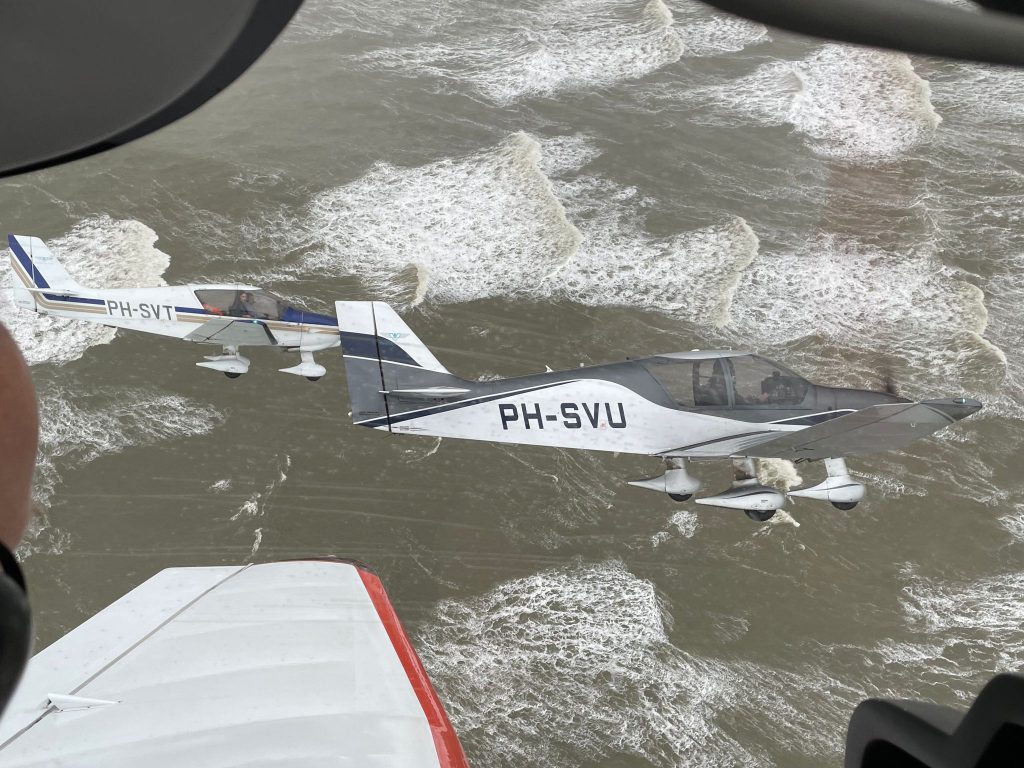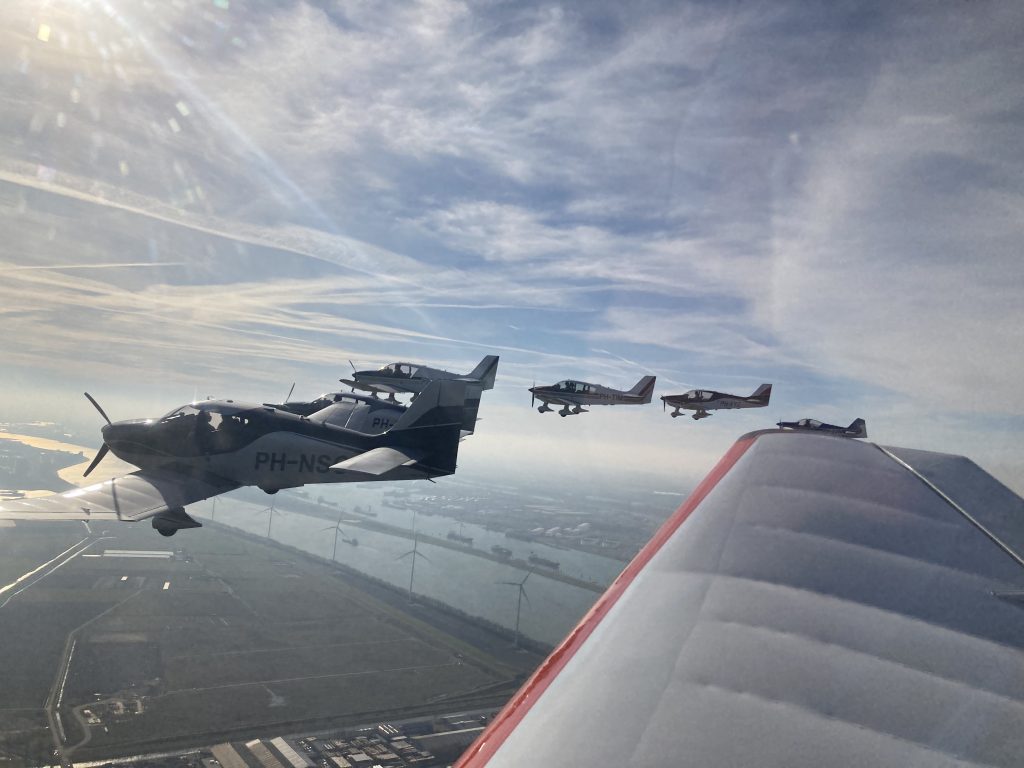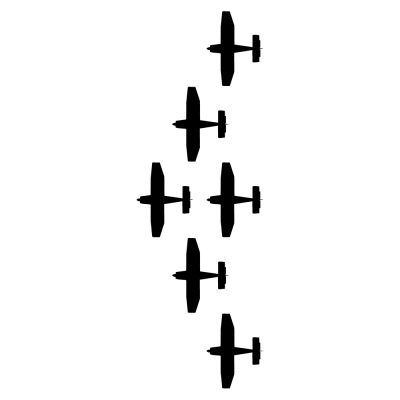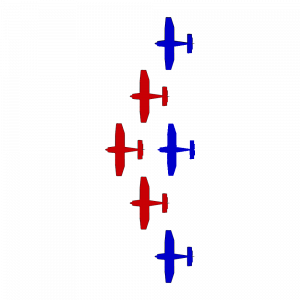Dice Formations
The Victor Romeo Formation performs three different formations based on dice: the Carré Formation, the Dice Formation, and the Dice Six.
Out of these three, the Carré Formation and the Dice Six are the most difficult to fly, because these comprise several rows of airplanes flying Line Abreast. As there is only about one meter of air between the wingtips, there’s not much space for movement (or mistakes). As an extra challenge, the second and third row must keep not only the distance between the plane next to them neatly at one meter but also have to watch the distance to the leader or the row before.
The Dice Formation (five aircraft) is a bit less complicated. The two planes in front are flying Line Abreast but with more distance between the wingtips to allow the one in the middle just behind some space.
